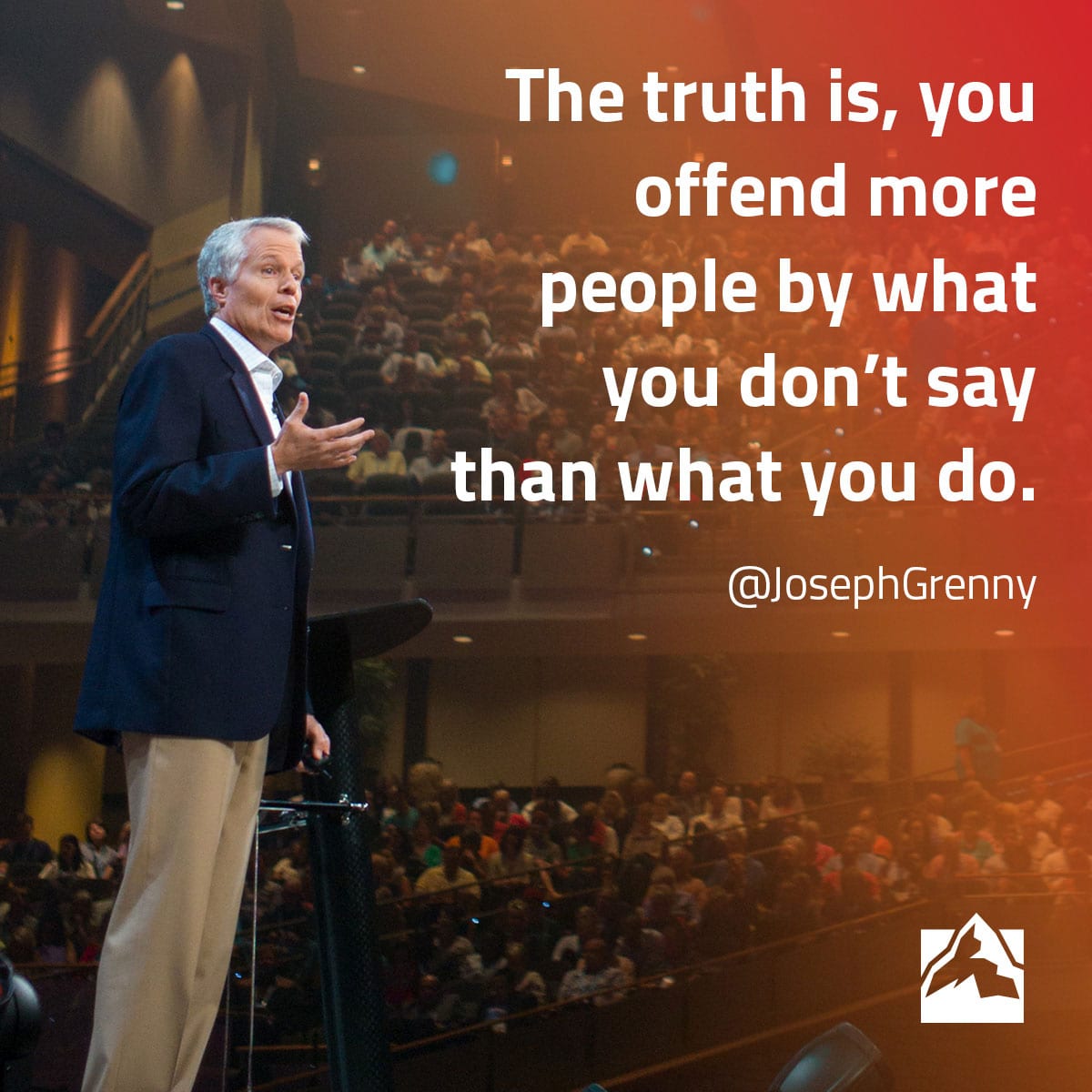
It will cost you a lot to be like Jesus, but it cost Him a whole lot more.

It will cost you a lot to be like Jesus, but it cost Him a whole lot more.

Terrible bosses. We’ve all had them. Managers who seem to take their daily playbook from The 7 Bad Habits of Highly In-Effective Leaders. And if we’re really honest with ourselves—as every leader should be—each of us has our own bad habits.
A year ago, with the release of GLSnext, the newest leadership app from the Willow Creek Association, our team at OX supported the launch with a comedic promo featuring a “squad goals” style slow-motion ending. The audience loved it so much that we saw people bootlegging the video on their phones.
Over the next year, as the GLSnext app developed, so did the characters we had introduced in the launch video. We wanted the rest of the series not to just describe the app itself but depict everyday leadership situations where the app is useful. Oh…and we wanted it to be even FUNNIER.
We brainstormed a dozen bad habits bosses have.
Press pause for a moment. Our team created these situations out of a sense of lighthearted fun. But over the months while we were producing them, we started to realize that we actually had some of these traits ourselves! And we hadn’t even realized it! What at first had been a fun exercise to blow off steam about someone else had developed into a self-diagnostic tool. Oops. Several of our colleagues at the Willow Creek Association have shared the same thing.
And you know what? Recognizing your weaknesses isn’t such a bad thing.
Because GLSnext is one of the best digital resources I know of to unleash the full potential of a team and sharpen the leadership skills of . . . well . . . everyone.
For fun, you can watch the GLSnext 2.0 promo video here.

It’s not what you know, it’s how fast you learn.

Empowering leaders refrain from stepping in to solve their team-members’ problems. Instead, they foster a culture where team members become independent and take initiative. This excellent post by Ken Blanchard originally appeared on Ken’s How We Lead blog here.
Do you ever go home feeling that you’ve spent the whole day doing jobs on other people’s “to do” lists instead of your own? Do you feel that you’re doing more but accomplishing less? Your life may seem out of control, but it doesn’t have to be if you learn the art of monkey management.
Several years ago I had a chance to work with the leading expert of monkey management, Bill Oncken, Jr., who, with Don Wass, authored one of the all-time best-selling articles published by the Harvard Business Review entitled “Managing Management Time: Who’s Got the Monkey?” Bill and I joined forces with Hal Burrows to write The One Minute Manager Meets the Monkey (Morrow, 1989). It was a fabulous experience and I learned quite a few things about managing monkeys that still hold true today.
For those of you who are still scratching your head, allow me to explain. A “monkey” is the next move after two individuals meet, as illustrated here: Say you meet an employee in the hallway. He says, “Can I see you for a minute? We have a problem.” He explains; you listen; time flies.
Twenty minutes later you know enough about the problem to realize you’ll have to be involved, but you don’t know enough to make a decision. So you say, “This is very important, but I don’t have time to discuss it now. Let me think about it and I’ll get back to you.”
The detached observer understands what just happened, but when you’re in the middle, it’s harder to see the big picture. Before you met your staff member in that hall, the monkey was on his back. While you were talking, the matter was under joint consideration, so the monkey had one leg on each of your backs. But when you said, “Let me think about it and I’ll get back to you,” the monkey moved squarely onto your back.
The problem may have been part of your employee’s job, and he (or she) may have been perfectly capable of proposing a solution. But when you allowed that monkey to leap onto your back, you volunteered to do two things that this person was generally expected to do as part of his job:
(1) You accepted the responsibility for the problem, and
(2) You promised him a progress report.
Just to be sure it’s clear who’s in charge now, your staff member will stop in on you several times during the next few days to say, “Hi! How’s it coming?” If you haven’t resolved the matter to your employee’s satisfaction, he may begin to pressure you to do what is actually his job.
To avoid this travesty, monkey management is necessary.
Managers must be careful not to pick up other people’s monkeys. When they do, they broadcast the message that the employees lack the skills to care for and feed the monkeys themselves. Managers who grab monkeys off their people’s backs often kill employee initiative, and everyone is left waiting for the boss to “make the next move.”
Nobody wins when you take care of other people’s monkeys. You become a hassled manager and don’t feel very good about yourself. And you have workers who look to satisfy their needs elsewhere, because they feel underutilized and unappreciated. They often become dependent upon the boss. The care and feeding of other people’s monkeys is the ultimate lose/lose deal.
Bill Oncken, Jr. developed four rules of monkey management to help managers give back monkeys without being accused of buck-passing or abdication. They are:
If you follow Oncken’s rules, you’ll stop viewing your people as the major source of your problems and will soon start seeing them as major solutions, because each of their backs can be a depository for several monkeys.
Try monkey management—it works!

Beverley Bestbier, operations manager for CompSol, based in Port Elizabeth, South Africa, shares the impact the GLS is having on her company, and why she brings her team back every year.
CompSol’s journey with GLS started in 2012 when a handful of our managers and assistant managers attended the conference in Port Elizabeth, South Africa. As soon as it started, it felt as if the conference was especially designed to speak to each of us personally—no matter our leadership level. We attended the same conference, but we each went home with a different personal message on how to improve as a leader.
Over the next year, we continuously found ourselves referring to GLS sessions. In difficult and trying times we said, “If you are not dead, you are not done” and reminded each other constantly that “everyone wins when a leader gets better.” A difficult conversation was made easier by referring back to a GLS session with Joseph Grenny and using his ideas to work through it. We bought resources at the GLS which we read, re-read, referenced and discussed at length during our meetings. Leadership books we’ve gotten at the Summit have impacted the format of how we hold our meetings, and we have implemented our own umbrella system with “crazy” ideas.
When we attended again in 2013, we were reminded to be courageous through every challenge we faced into the next year. It was an amazing experience to see how our group was being transformed, so we made the decision that the GLS is a must for all the leaders in our company.
In 2015 we announced a GLS readiness campaign to our company. The team was excited and expectant for what was to come.
The 2015 GLS finally arrived, and our whole team was there. Before it started, I looked across the row at the faces of our team, and they were excited after the build-up we created all year.
The GLS experience absolutely outperformed the expectations of our team.
 During the conference, each leader was in the moment, perfect for the season they were in. It was amazing to experience each message matching our leadership challenges that year. As I looked at my team’s faces, the impact the words were having on them was evident; at different times some of the leaders became emotional. Each message was powerful.
During the conference, each leader was in the moment, perfect for the season they were in. It was amazing to experience each message matching our leadership challenges that year. As I looked at my team’s faces, the impact the words were having on them was evident; at different times some of the leaders became emotional. Each message was powerful.
As the conference drew to a close, we joked, saying that the next session could not possibly beat the impact of the previous session. Yet the ending was perfect with Craig Groeschel’s 5 Cs. We each stood up when our C was called—be it Confidence, Connections, Competence, Character or Commitment.
We each took a personal stand to expand our leadership in 2016.
We are keeping each other accountable to exercise our C’s and we have expanded the GLS footprint in our company. We now have a weekly time slot where we show a GLS clip, exposing our entire company to the GLS messages. As you can imagine, Horst Schulze has become a particular favorite when we speak about client service.
One of my team members says it best: “The GLS has helped me to accept and embrace God’s will in my life, not only as a leader, but also as a daughter, sister, mother and wife. To have this opportunity to listen and learn from such inspiring leaders has resulted in life-changing growth in all aspects of my life.”
We bought our tickets for the 2016 GLS and our team will be there ready to listen—really listen—and ready to grow as leaders. Everyone at CompSol will win as the leaders are willing to grab hold of the messages and become better leaders.

Working with a global team? Then you must understand cultural relativity and how it impacts your team. Get backstage insight from Erin Meyer at the 2016 Global Leadership Summit.

If your character is not strengthening, your future is weakening.

The truth is, you offend more people by what you don’t say than what you do.

God doesn’t have a probelem with your doubt, He has a problem with your disbelief!

At GLS 2016, Erin Meyer challenged us to gain a deeper understanding of cultural differences. Diverse preferences in cross-cultural communication can negatively impact our ability to lead and cause us to misunderstand each other. To become effective leaders in a globalized reality, we need to understand and make adjustments for our cultural preferences.
Do you know how you would score on the eight scales on Erin’s culture map?
Take Erin’s quick 25-question culture assessment here.
After you have taken the assessment, reflect on what you’ve learned.
In an increasingly globalized world, cross-cultural understanding is becoming an essential skill. Most leaders will, at some time in their careers, interact and lead people from different cultures or countries. Blind spots in this arena can lead to confusion and distrust.
Self-awareness is your first next step. Take the assessment today!
“We welcome and encourage comments on this site. There may be some instances where comments will need to be edited or removed, such as:
If you have any questions on the commenting policy, please let us know at heretoserve@globalleadership.org”
Recent Comments